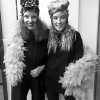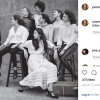British Society of Magazine Editors
Magazines are too white. How do we fix it?
The statistics show that diverse and inclusive teams create better content and make for better places to work. So why is the media still so white – and how can we all play our part to fix it?
In the wake of Black Lives Matter protests sweeping the world, join BSME 2020 Chair Maria Pieri, Editorial Director of APL Media along with Busola Evans, Associate Editor and Supplements Editor of Livingetc and Homes & Gardens, Amit Katwala, Senior Editor of WIRED UK, Samantha McClary, Editor of Estates Gazette and Andrea Thompson, Editor in Chief of Marie Claire, as they discuss how magazines can begin to make themselves and their products truly diverse.
10 Things We Learnt
Summarised by Phoebe Walker
BA Journalism graduate, Roehampton University
The BSME held its seventh Lockdown Lunch on Wednesday 1st July, tackling the issue of diversity, moderated by Maria Pieri, BSME 2020 Chair and Editorial Director of National Geographic Traveller (UK) and joined by Busola Evans, Associate Editor and Supplements Editor of Livingetc and Homes & Gardens; Amit Katawala, Senior Editor of WIRED UK; Samantha McClary, Editor of Estates Gazette and Andrea Thompson, Editor-in-Chief of Marie Claire.
1. The exclusivity of the industry: Andrea Thompson, Editor-in-Chief of Marie Claire commented: “The magazine industry is not as welcoming as it could be, and therefore, not an appealing environment for people of colour.” The panel agreed companies have a duty to acknowledge the obstacles people from outside of their own backgrounds are facing and should be looking to provide better routes to entry into the industry.
2. Barriers to entry: There are many barriers to entry for people from ethnic minorities entering the magazine industry. WIRED’s Amit Katawala, highlighted the expectation interns will have to work unpaid. He said: “This gives the impression this is a luxury career, as not everyone can afford to take a year off unpaid to make the connections that they need to make.” Andrea Thompson added this “excludes huge swathes of people and moving forward, the whole concept of unpaid internships needs to be abandoned.”
3. Low expectations of young black people: “From an early age, it is instilled in the minds of young black people that a career in journalism isn’t accessible to them,” said Andrea Thompson. “This is due to a lack of representation within the industry as well as the attitudes of their teachers and educators.” She noted, “there’s a fear they might have to hide a part of who they are in our profession.” Busola Evans, Associate Editor and Supplements Editor of Livingetc and Homes & Gardens, added: “It is important people of colour know this industry can be for them and there is a role for them.”
4. A Blockade in the hiring process: Busola Evans, said: “It’s common practice for managers and editors to employ people who are mirror images of themselves and in order to diversify and transform the industry, companies need to widen their horizons when looking for new talent.”
Samantha McClary, Editor of Estates Gazette, stressed that there are also issues with incentive schemes involving employees brining new contacts to their firms. “This can be a real barrier to making your workforce more diverse because the people we know are often like us,” she explained.
5. Nepotism is rife: The current climate has meant businesses are often in a rush to fill posts when they are up against deadlines and budgets and this means reaching out to the ‘usual places’ and often people you know. “What we do is we ask somebody if they know somebody and end up hiring within this tiny pool of people,” Andrea Thompson admitted. She then went on to express the importance of looking for talent outside of this small circle. In terms of internships and work experience, Samantha McClary explained businesses should be working with charities and offering placements to young people who might not have those opportunities otherwise.
6. The importance of mentoring: Mentorship programmes are an active step in making the magazine industry more accessible for young people of colour. The panel discussed how programmes can connect companies with students who are looking for guidance and encouragement. Busola Evans, noted, there is no quick fix. “Knowing how difficult it can be, I try and take them under my wing. But in order to see change we all have to be more generous with our time.” Reaching out to schools or universities, that are not the norm, is important too, to offer mentorship or recruitment possibilities.
7. A token person of colour: The panellists shared their own experiences of being the only person of colour within their publications. Andrea Thompson said: “It could be a burden becoming the spokesperson for the whole BAME community," while Amit Katawala expressed the importance of hiring somebody for their skills rather than the colour of their skin and because they tick a box. Busola Evans added, “Commissioning editors need to realise black people can write about love, relationships, health and all manner of things. We should not be called upon simply to write something that a white person cannot.”
8. Using your voice and platform: Andrea Thompson noted the current situation has offered a huge opportunity for change and is the ideal time for an open and honest conversation. She said: “We need to acknowledge the privilege that some of us have and some of us don’t have in order to make changes.” Samantha McClary discussed her initial reservations when using her voice to ally the Black Lives Matter movement for fear of opening up the conversation and saying the wrong thing. She said: “ I realised it is incumbent on all of us in any position of power or visibility to talk about the things we need to change.”
9. Diversifying content: “Magazines have a really important job in terms of showing diversity and if you’re not doing that then you’re not really telling the whole story,” said Amit Katawala. He added “I also believe content that has been written by a diverse team of people is better.” Andrea Thompson added: “I’ve sought to create an atmosphere at Marie Claire where diversity just runs through the publication. We are also regularly checking when writing any feature to take into consideration all of the different perspectives.”
10. Making concrete plans for change: Self-assessment is the key to change; the pages of magazines and the teams created need to be more representative of society. Amit Katawala said: “In order to quantify change, it’s really important to take stock of where you are now.” Andrea Thompson and Samantha McClary also agreed. Andrea said: “Lasting systematic change will come from breaking the stigma, talking about race more openly and taking action to transform and diversify the industry as a whole.”
source | BSME via magculture


 It's painful to see what has become of it, but not a single ingredient of its heyday is there anymore.
It's painful to see what has become of it, but not a single ingredient of its heyday is there anymore.

